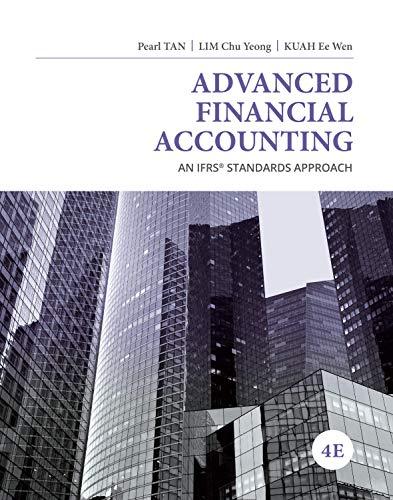Question
Joint Cost Far Side Mining mines minerals used in artistic paints. The mining process yields three products from a single process:red pigments,blue pigments, and aclay-like
Joint Cost
Far Side Mining mines minerals used in artistic paints. The mining process yields three products from a single process:red pigments,blue pigments, and aclay-like by-product. The three products emerge from a single mining process. For every ton (2000 lbs) of mineral, the "Red" department can manufacture600 lbs of red pigment, the "Blue" department can manufacture800 lbs of blue pigment, and600 lbs of clay-like by-productemerge. The red and blue pigments require additional processing before they can be sold.
Far Side sells theclay-like by-productin bulk to a secondary distributor. It costs Far Side$2.00/lbto transport theclay-like by-productto the secondary distributor. Far Side sells theclay-like by-productto the secondary distributor for$3.25/lb.
In a typical month, Far Side converts 40 tons (80,000 lbs) of mineral into the various pigments and the by-product, for a total joint cost of $580,000 (14,500 $/ton). If 40 tons of minerals are used in production and Far Side refines the minerals further, Far Side incurs$43,000in additional processing costs for the blue pigment, and$38,000in additional processing costs for the red pigment.
After the additional processing, Far Side can sell the red pigment for$15/lband the blue pigment for$20/lb.
Far Side uses the net realizable value method for theclay-like by-product, and the approximate relative sales value method for joint products (theblueandredpigments).
Q1
What is the amount of joint cost applied to theclay-like by-product?
$0
$30,000
$192,710
$357,290
Q2
What is the amount of joint cost applied to theblue pigment?
$0
$30,000
$192,710
$357,290
Q3
What is the amount of joint cost applied to thered pigment?
$0
$30,000
$192,710
$357,290
Q4
What is the total joint cost applied to the three products (the red pigment, blue pigment, and by-product)?
$80,000
$550,000
$580,000
$919,000
Q5
If Far Side has the opportunity to sell theblue pigmentat the split-off point (i.e. before incurring the additional costs required to process theblue pigmentfurther) at a price of $18 per lb should Far Side process the pigment further or sell it at the split-off point?
Process the pigment further.
Sell at the split-off point.
Both provide the same level of profit
Q6
Would your answer to the immediately preceding question change if the joint costs were only allocated to the red and blue pigments (i.e. not Clay)?
No
Yes
I have no idea
Q7
If the processing cost of theclay-like by-productdeclined (got cheaper), what would happen to the joint cost allocated toBlue pigment?
Joint Cost allocated toBlue pigmentwould increase
Joint Cost allocated toBlue pigmentwould decrease
Joint Cost allocated toBlue pigmentwould remain the same
Q8
If the processing cost ofBlue Pigmentdeclined (got cheaper), what would happen to the joint cost allocated toBlue pigment?
Group of answer choices
Joint Cost allocated toBlue pigmentwould increase
Joint Cost allocated toBlue pigmentwould decrease
Joint Cost allocated toBlue pigmentwould remain the same
Q9
At the end of the month, a customer comes to Far Side with an order for 1,600 lbs ofBlue Pigment. Based solely on profit considerations, should Far Side mine the extra two tons and fill this order?
Assume that Far Side can mine the extra two tons of material that would be needed to fill the order, but sales for the other products would not change. Also assume that the processing costs are perfectly variable by weight.
Yes
No
Q10
Suppose, instead, that at the end of the month, a customer comes to Far Side with an order for 1,200 lbs ofRed Pigment. Based solely on profit considerations, should Far Side mine the extra two tons and fill this order?
Assume that Far Side can mine the extra two tons of material that would be needed to fill the order, but sales for the other products would not change. Also assume that the processing costs are perfectly variable by weight.
Yes
No
Q11
Explain your answer to the previous question (about selling additionalRed pigment) in one to two concise sentences.
Step by Step Solution
There are 3 Steps involved in it
Step: 1

Get Instant Access to Expert-Tailored Solutions
See step-by-step solutions with expert insights and AI powered tools for academic success
Step: 2

Step: 3

Ace Your Homework with AI
Get the answers you need in no time with our AI-driven, step-by-step assistance
Get Started


